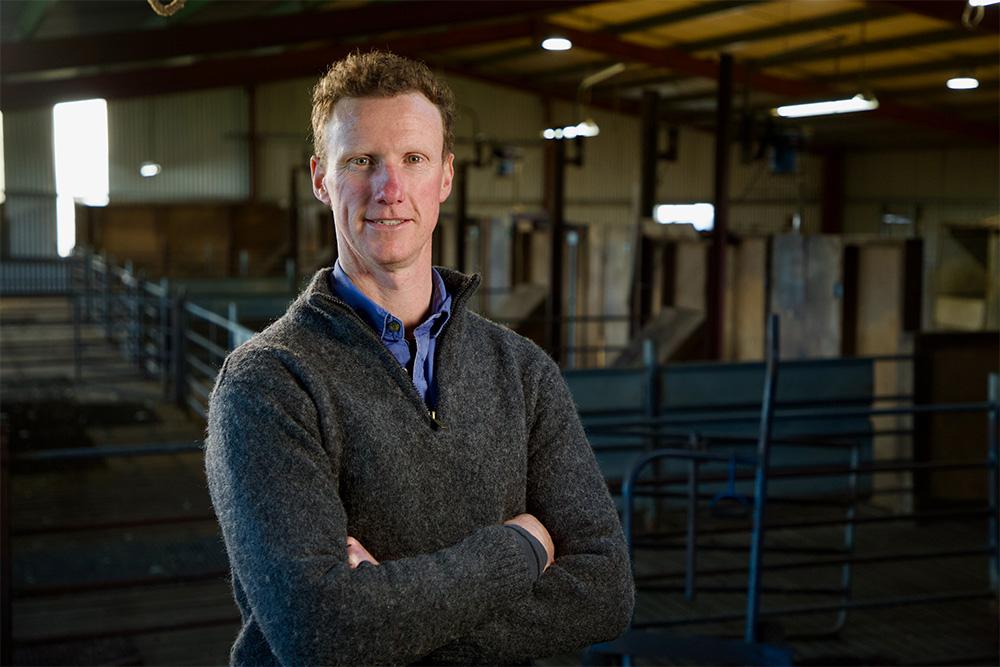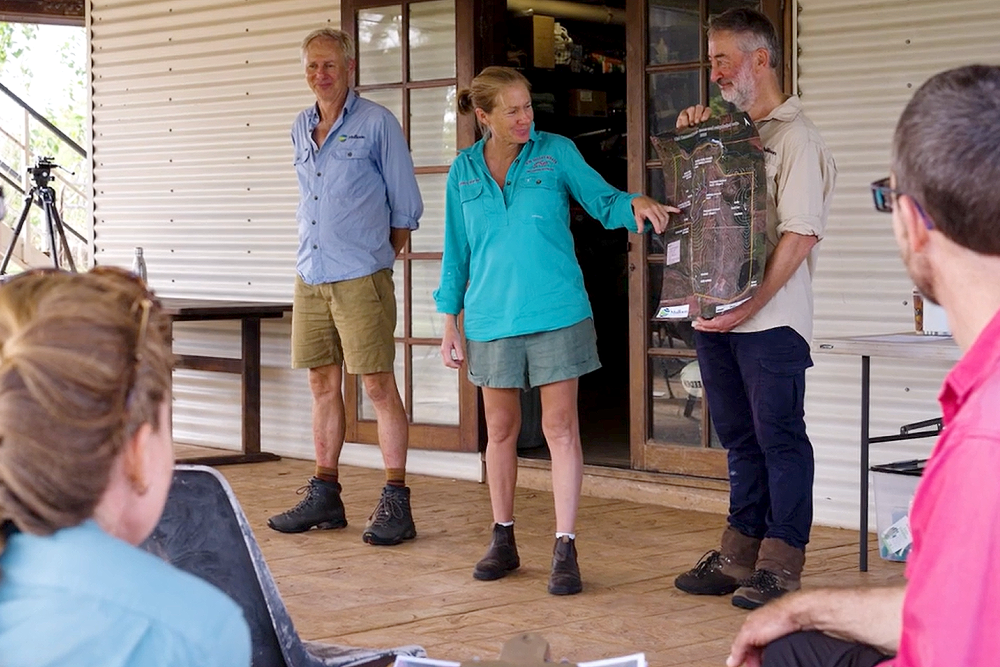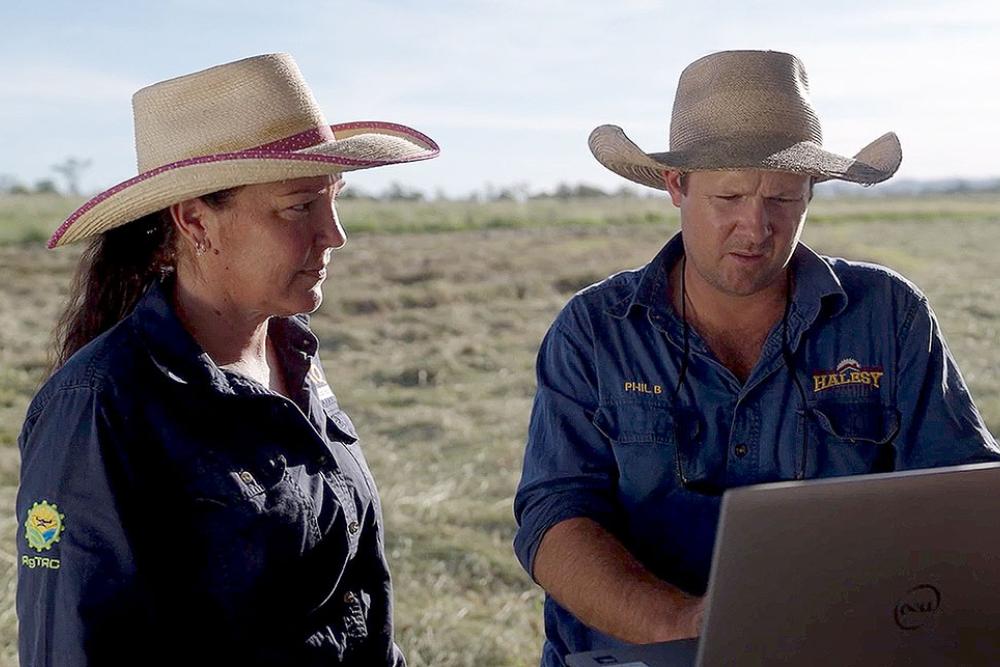Water security is a growing concern for Western Australian farmers. During a period of drought between 2018 and 2020, many of the state’s 200,000 farm dams ran dry, leaving growers struggling to maintain livestock and cropping operations.
In response, the WaterSmart Dams Project was launched to trial and share practical solutions for improving on-farm water resilience. Supported by the Future Drought Fund (FDF) and the Department of Primary Industries and Regional Development (DPIRD) and delivered by the Grower Group Alliance (GGA) in collaboration with The University of Western Australia (UWA), the project brings together researchers, grower groups, and farmers across South-West WA.
The project was designed in consultation with 4 grower groups across 12 demonstration sites in regions including Kojonup, Darkan, Jerramungup, and Merredin. Host farmers trialled technologies such as evaporation covers, sub-surface drainage, dam sealing treatments, and catchment modifications. These trials followed a grower-led science approach, with farmers playing a central role in shaping the research.
Paul South, mixed farmer and trial host in Darkan, implemented advanced drainage to capture underground water and redirect it into his dam. “Being involved in a project like this puts you in the front-row seat to work with researchers in the field and like-minded people working towards a common cause”, says Paul.
Paul is just one of the host farmers seeing great results from the research, and who is keen to see this shared amongst his peers and community. As part of the project, the Water Evaluation Platform (WEP) has been developed, and aims to do exactly that, with all results feeding into the platform. It’s designed to help farmers assess the costs, benefits, and suitability of different technologies.
UWA’s Dr Bonny Stutsel, one of the project researchers, has been out in the field with the trial hosts capturing the data. She is passionate about how collaborative the project has been, saying “We’re all about trying to get people the good science and the good answers to be more climate resilient”.
Associate Professor Nik Callow and WaterSmart Dams Technical Lead said, “We’re giving people tangible options and solutions to make decisions that are right for them… it’s making small, incremental changes and investments to navigate these challenging times.”
See how the Future Drought Fund is helping build water resilience in South-West WA with WaterSmart Dams.
This project received funding from the Australian Government’s Future Drought Fund (FDF) via the FDF Innovation Grants program and the Department of Primary Industries and Regional Development (DPIRD) and was delivered by Grower Group Alliance (GGA).
7 May 2025
Video duration: 7 mins 52 secs
Introduction
This is the transcript of a video case study produced by the Australian Government's Future Drought Fund (FDF). Funded under the FDF’s Innovation Grants program, the video features collaborators on the WaterSmart Dams Project, reflecting on their experience in working on the project, which was a grower-led project investigating solutions for water security on-farm.
This project was delivered by the Grower Group Alliance, with additional funding from the Department of Primary Industries and Regional Development (DPIRD).
Learn more about the Future Drought Fund and South-West WA Drought Resilience Adoption and Innovation Hub.
Transcript
[Recording begins]
Dr Jo Wisdom [0:31]
Water Smart Dams Project is a really exciting collaboration between growers, industry experts and people who are really identifying a challenge and a need around water security in WA.
Dr Daniel Kidd [0:45]
The Water Smart Dams project was developed after a really dry period through 2018 through to 2020 where a lot of the 200,000 farm dams in WA ran dry. It was a really difficult period for the ag industry and we could see there was a real need to improve the water security for WA Farmers.
The role of farmers and grower groups was integral to the delivery of this project. We involved four grower groups: so we had Fitzgerald Biosphere Group in the Jerramungup region, we had Compass Agricultural Alliance in Darkan, we had Southern Dirt in Kojonup, and we had Merredin & Districts Farm Improvement Group out at Merredin. Four different areas, all not necessarily on scheme water, but all had different ideas about what was important to investigate on farm and what would be adoptable and scalable for their growers.
Nik Callow [1:30]
The technologies that were adapted and used in this project were very much guided by growers. It's a grower-led science approach to what we've done.
The team here at the University of Western Australia has been leading this key role in monitoring the sites, being able to lead the research and development and get really solid numbers on how these sites perform, their costs and their economics, being able to build them into the planning tools that we've developed. Learning from the grower hosts on how these sites work in the real world and really having solid numbers that people can rely on when they start planning what they're going to do about on-farm water resilience.
Dr Bonny Stutsel [2:11]
To me as a researcher, the importance of the Water Smart Dams project has been connecting scientists with the growers and also the wider community. We've been able to work with the local grower groups on farm with the farmers to then put the numbers behind all the trials to understand if they've been effective or if they haven't and what are their best options and what things they might like to implement for drought resilience.
Paul South [2:33]
We have implemented sub-surface V-drains and the idea here is to capture subsurface water. The V-drains we have here have a riser at the end of each drain, so the drains drain the water towards the riser down into an elbow, and the V-drains are connected underneath with a T-piece and that feeds further down the hill into a contour bank which feeds into a dam. So all that good subsurface water is feeding directly into the dam.
Being involved in a project like this puts you in the front-row seat to work with researchers in the field and like-minded people working towards a common cause to make your farming system more sustainable through the use of better efficient capturing of water. I just love capturing water. It's just like a passion of mine to drought proof our farm.
Wayde Robertson [3:26]
Using the Daisy Dam cover was a priority purely because we just needed to have a reliable water source come the end of summer.
The trial worked very well. It was very simple. We had minimal issues with the cover. What we've really learned from this project is just how much evaporation there is during summer. It's given us a real eyeopener onto what we could potentially implement into a number of other dams on our property and also some of the other projects, just how we can take little bits from them and implement it onto our own farm.
James Jefferies [3.58]
We are dry land farmers and water security is absolutely critical for us to continue to run livestock. For our dams in our country, we tend to have a rock in the bottom of them, so every time we build a dam, you hit a rock and they leak. There's multitudes of ways of try and fix a leaky dam, all with varying results. What we did was we used two different products that you actually spread evenly over the top of the water and then it soaks down and it's supposed to bind the clay particles together, then stop the leak.
We found that being able to get some scientific measurements through it and the collaboration that we had, we were able to find that the dam didn't go dry. So there's evidence there.
Ben Webb [4.43]
It's quite, quite good. Sheep country where we are, we've got about 10,000 merinos. They drink a lot of water. We don't start getting wet until June traditionally, so we need to be able to store water in dams for them for over the summer. We've got a cropping program, and we use a lot of water there for spraying, so we've got to have good quality water for that. And, then there's the house and the garden and those sorts of things as well. We often go for long periods with no rain, so we've got to be able to store a fair bit.
As part of the WaterSmart Dams project, we installed some sub-surface drainage. We had a very wet area in front of the dam, so we've drained that area into the dam, so we can now use that water later on in the season. And the area that we did drain the crop would often get water-logged and fail because of too much water. So hopefully we're killing two birds with one stone: drying out the cropping country and filling up the dam for storage for use later on in the year
Dr Bonny Stutsel [2:11]
All the research and findings from the 12 demonstration sites will feed into the water evaluation platform. The water evaluation platform is a tool for farmers to understand and learn about the findings from the 12 at scale demonstration sites for them to know whether they might like to go for an evaporation cover, and modify catchment to get more water into their dam, or just look at the economics of the other solutions that we've tried. We're all about trying to get people the good science and the good answers to be able to be more climate resilient.
Dr Jo Wisdom [6:03]
A big part of the Hub's role is to share information that is regionally-relevant and really meeting the needs of our farmers in Western Australia. So, we are very excited to share the water evaluation platform and see how farmers are going using that platform into the future.
Sheridan Kowland [6:23]
There's more than just about the site hosts. There's a wider community of growers who can benefit from these innovations and technologies through being able to adopt these practices to encourage them to be more drought prepared and drought resilient.
Renee Sieber [6:36]
Investing in projects such as WaterSmart dams is key to maximizing our future sustainability. Water security in particular underpins both cropping and livestock production. If we do not have that, we are not going to be sustainable in the future.
Paul South [6:51]
Water security is not just important for me. Without water security, I wouldn't be able to farm and grow the commodities I need to grow. If I didn't have a livestock system, I wouldn't have sheep to shear for our shearers. I wouldn't have sheep to sell and that wouldn't provide a job for our livestock agents. Truckies wouldn't have livestock to cart. These are all people that form the fabric of our communities. It's much more than just water security on my farm, it's much bigger than that.
Nik Callow [7:18]
We need to make sure that our farmers, our regional communities, have the solutions to get through drought. And, why this project is so important for Australian agriculture is we are giving people tangible options and solutions to make decisions that are right for them that help their farm businesses. It's making these small, incremental changes and investments to navigate these challenging times.
Recording ends [7:46]



